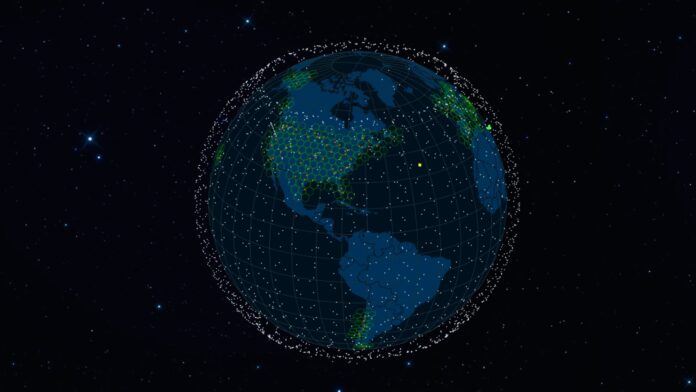In a rarity, SpaceX has told the FCC it’ll cut down on the total number of Starlink satellites it plans on operating amid concerns from rivals, environmental groups and astronomers about the system’s sheer size.
The company plans on doing so by reducing the satellites needed for Starlink’s “V-band” constellation, which was designed to work alongside first-generation Starlink satellites. Back in 2018, the FCC granted(Opens in a new window) SpaceX a license to operate 7,518 V-band satellites at 335km to 346km above the planet —significantly closer than the existing Starlink satellites, which hover over Earth at about 550km.
The V-band constellation was designed(Opens in a new window) to deliver even more satellite internet bandwidth and capacity to customers on the ground. But so far, SpaceX has yet to launch any V-band satellites for Starlink. Instead, the company has been pushing the FCC for approval for a second-generation Starlink constellation that’ll span nearly 30,000 satellites, which will operate in various orbits ranging from 340km to 614km above the planet.
(Getty)
The massive scale of the second-gen Starlink constellation has sparked opposition over concerns it’ll interfere with other satellite services, crowd out the competition, and create a toll on the Earth’s environment and night skies.
On Thursday, SpaceX sent(Opens in a new window) a letter to the FCC, saying it’s already been working with federal agencies and scientists “to establish and implement best practices designed to preserve space and our environment for future generations.” The same letter also dismisses the environmental concerns lobbed by competitor Viasat as “baseless.”
The company then added: “SpaceX hereby notifies the Commission of its intent, following issuance of the Gen2 license, to seek a modification of its V-band authorization to significantly reduce the total number of satellites ultimately on orbit.”
How many satellites will be reduced was left unclear. But the company plans on integrating the V-band technology as payloads on board second-gen Starlink satellites designed to operate at lower Earth orbits. “This modification will not increase, and may slightly reduce, the number of V-band space stations and it will not materially affect any other aspects of the V-band license,” SpaceX said.
Recommended by Our Editors
The company floated the proposal when the FCC has imposed a deadline for the V-band constellation. Back in 2018, the Commission required SpaceX to launch 50 percent of the satellites for the V-band system by Nov. 19, 2024. All remaining satellites need to be up Nov. 19, 2027, or else the company risks losing the license.
SpaceX already has a license to operate 4,408 satellites for the existing, first-generation Starlink constellation. However, SpaceX has been urging the FCC for clearance of the second-gen constellation to improve Starlink’s capacity and speeds when many users in the US are facing congestion woes. The company currently has over 3,200 Starlink satellites in orbit, according(Opens in a new window) to astronomer Jonathan McDowell.
Get Our Best Stories!
Sign up for What’s New Now to get our top stories delivered to your inbox every morning.
This newsletter may contain advertising, deals, or affiliate links. Subscribing to a newsletter indicates your consent to our Terms of Use and Privacy Policy. You may unsubscribe from the newsletters at any time.
Hits: 0















